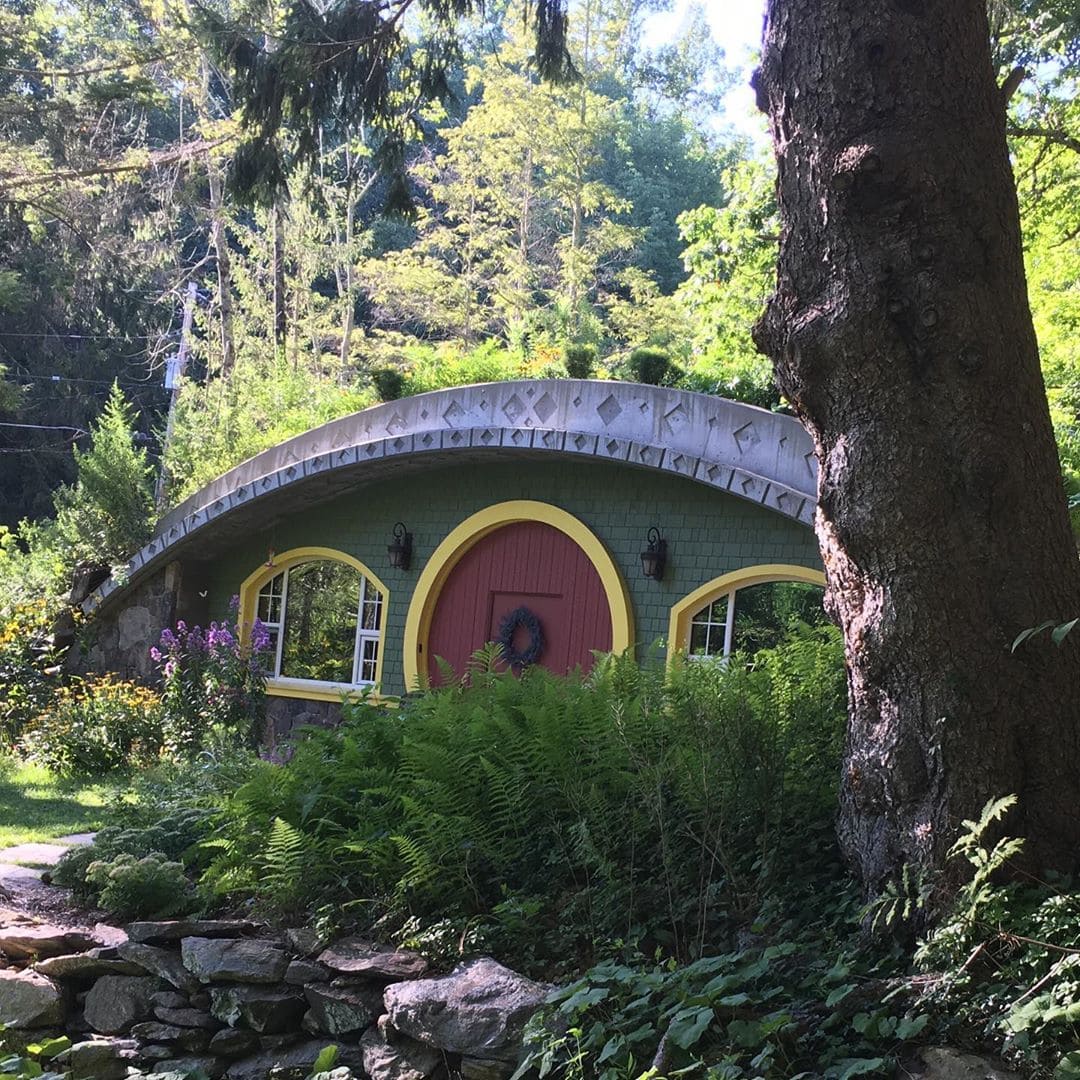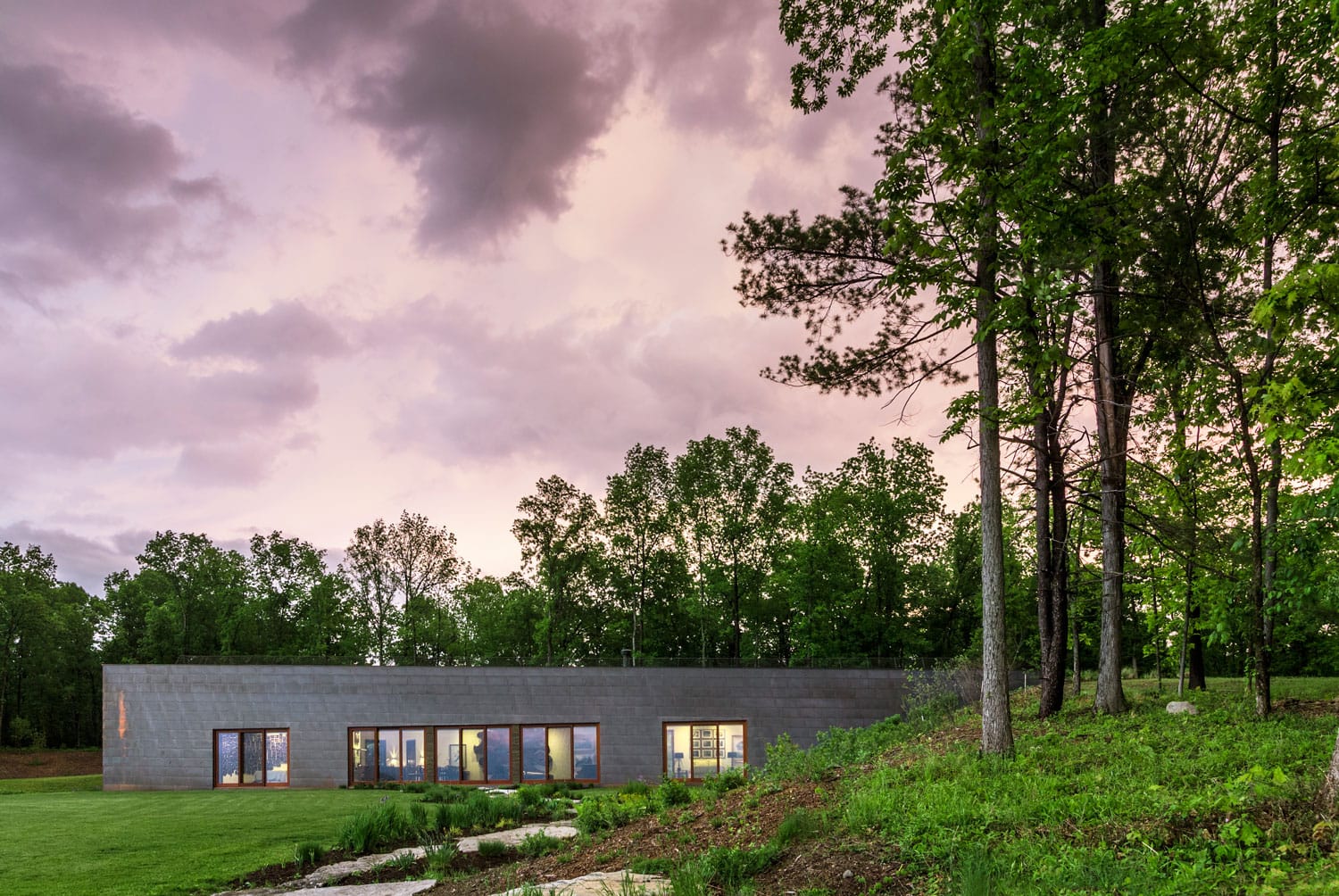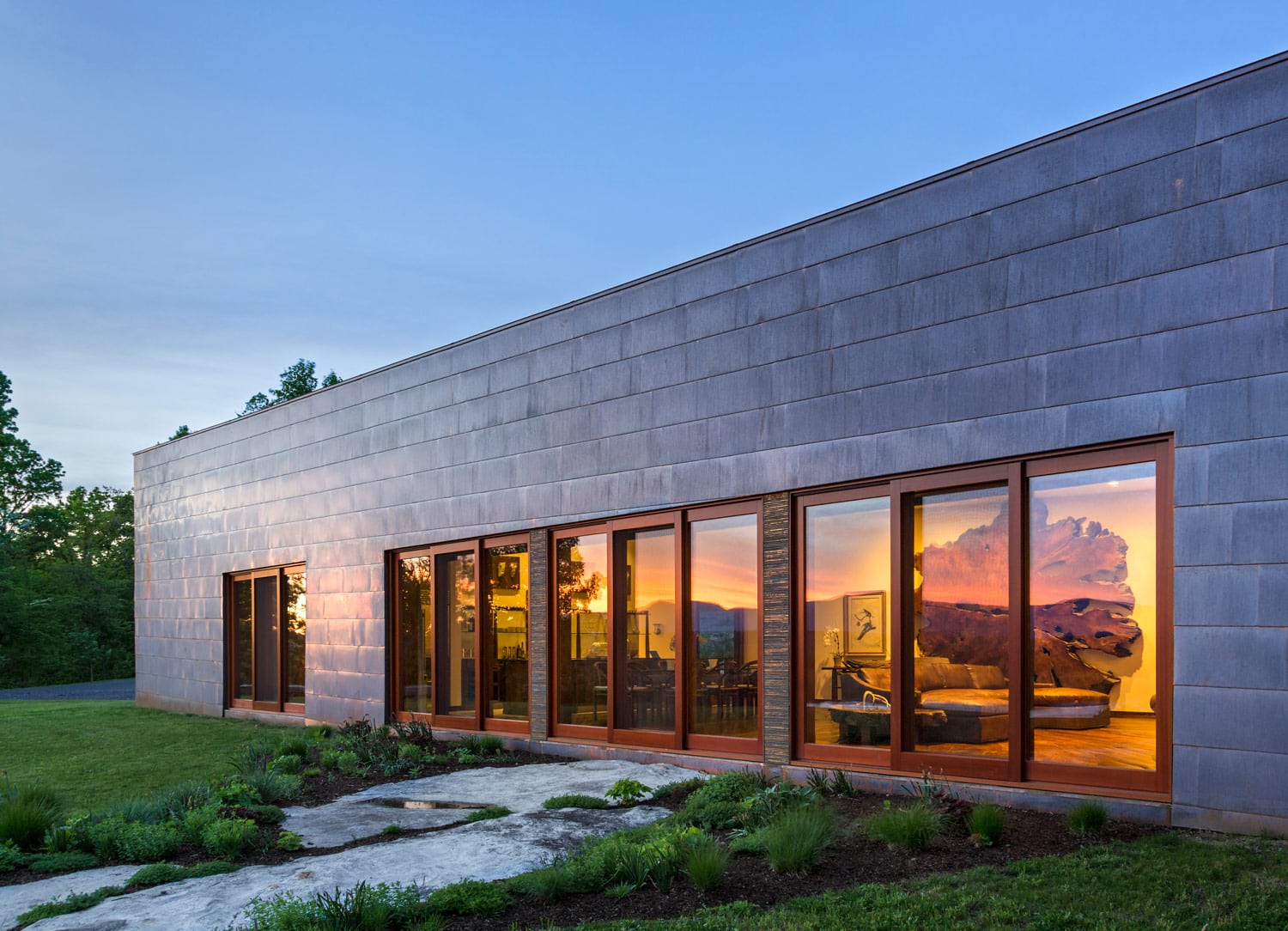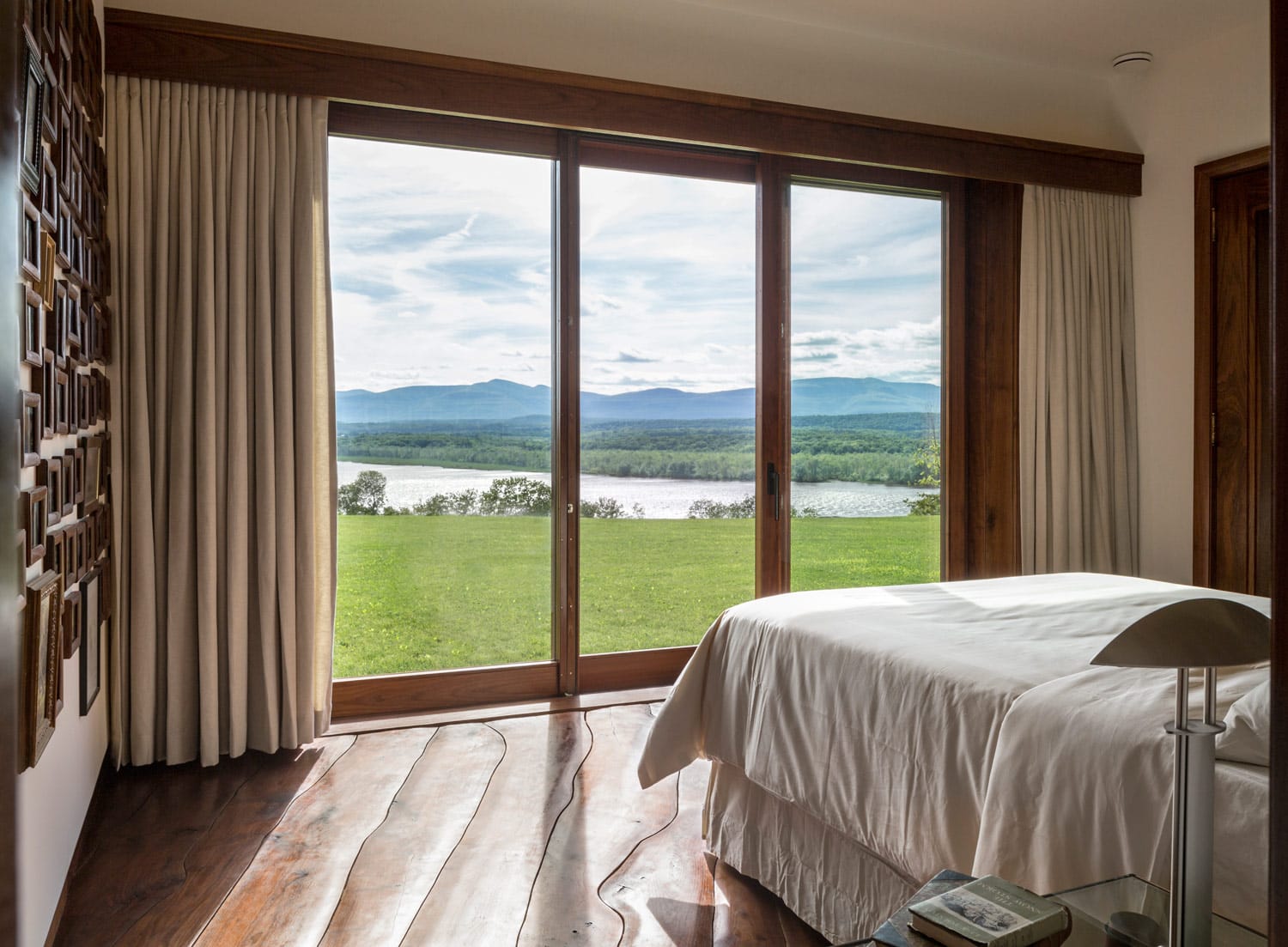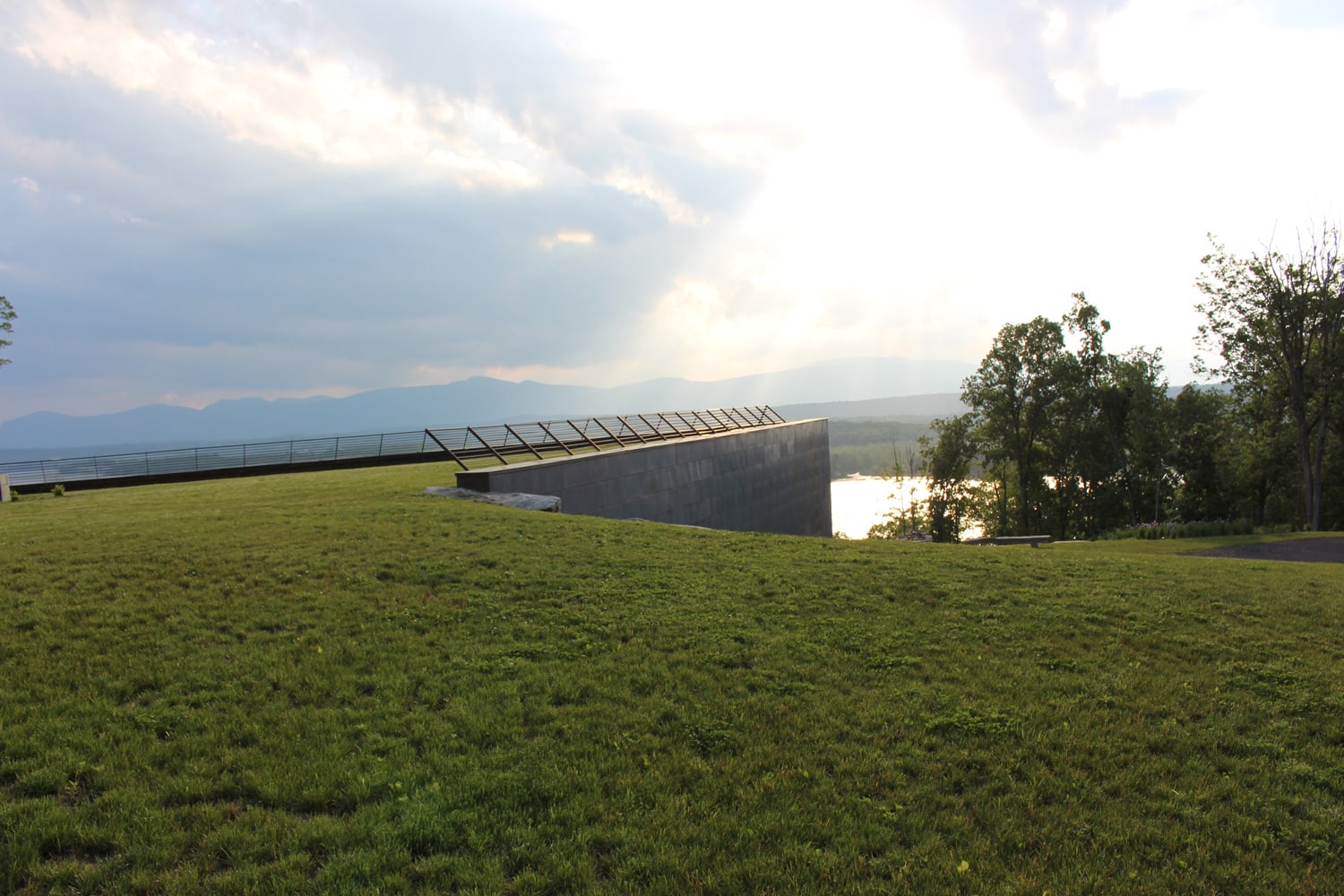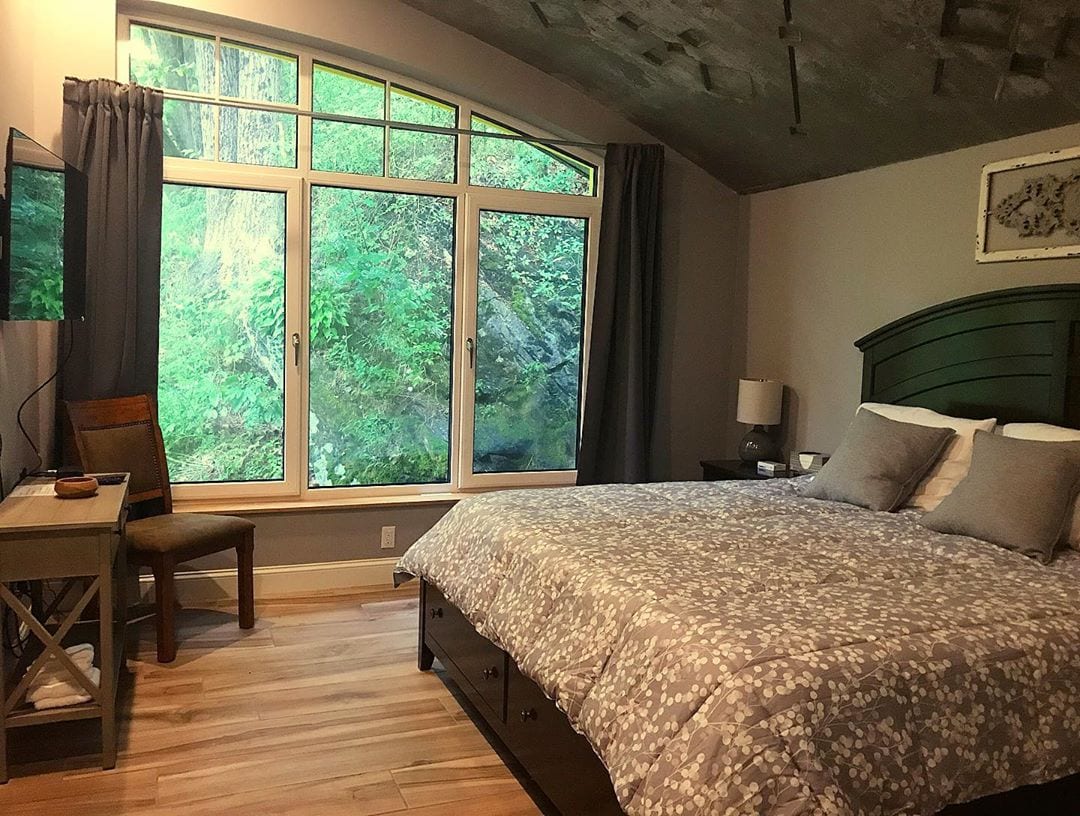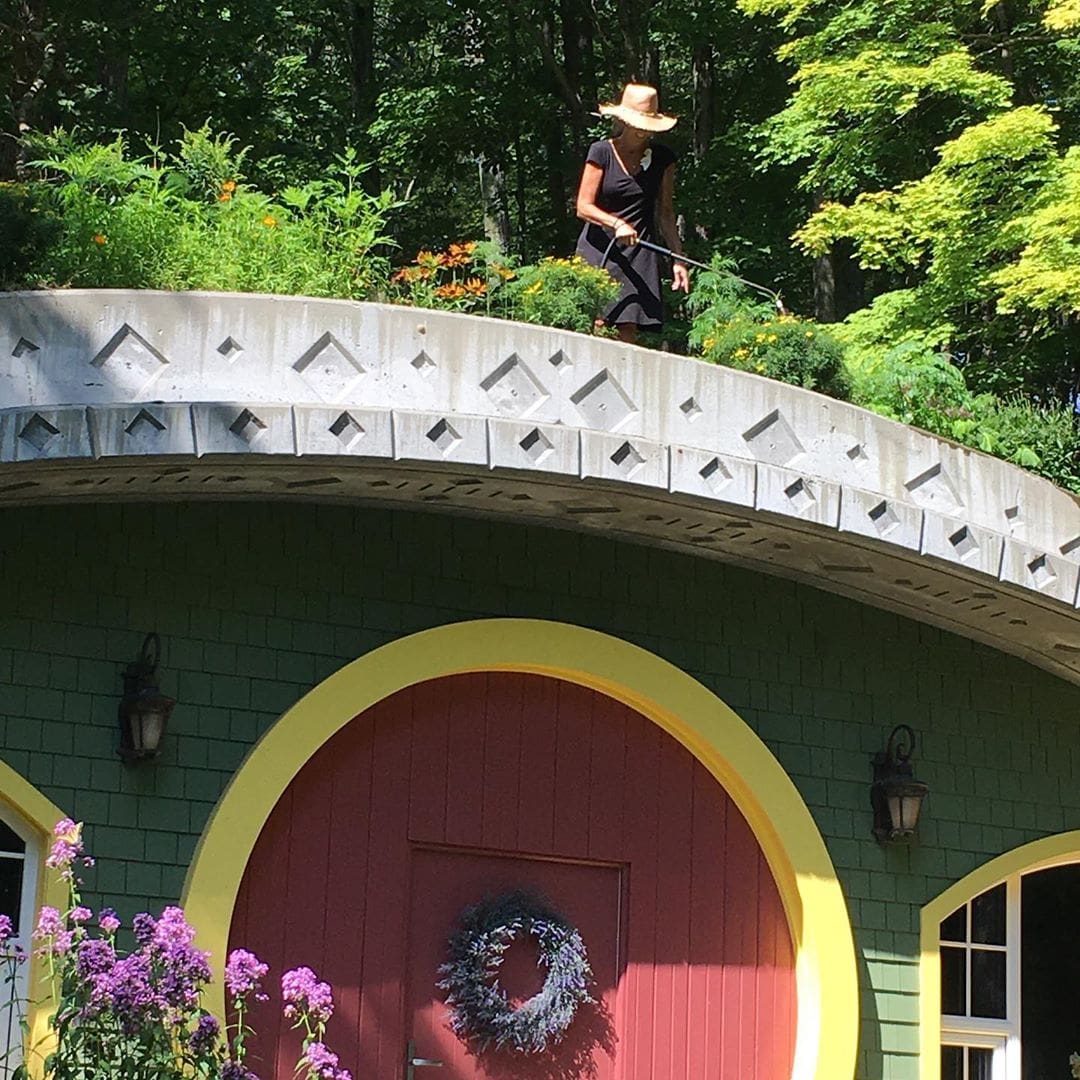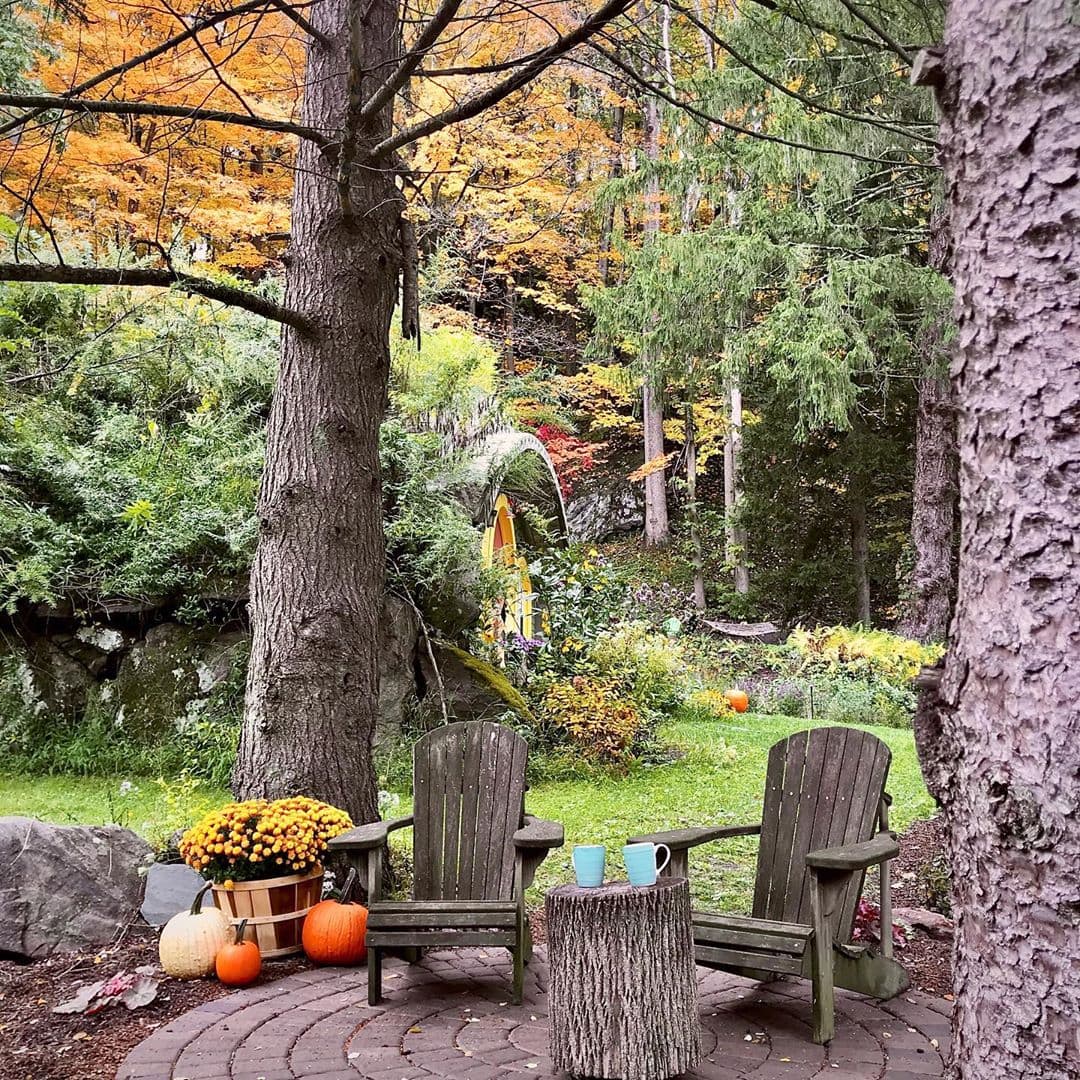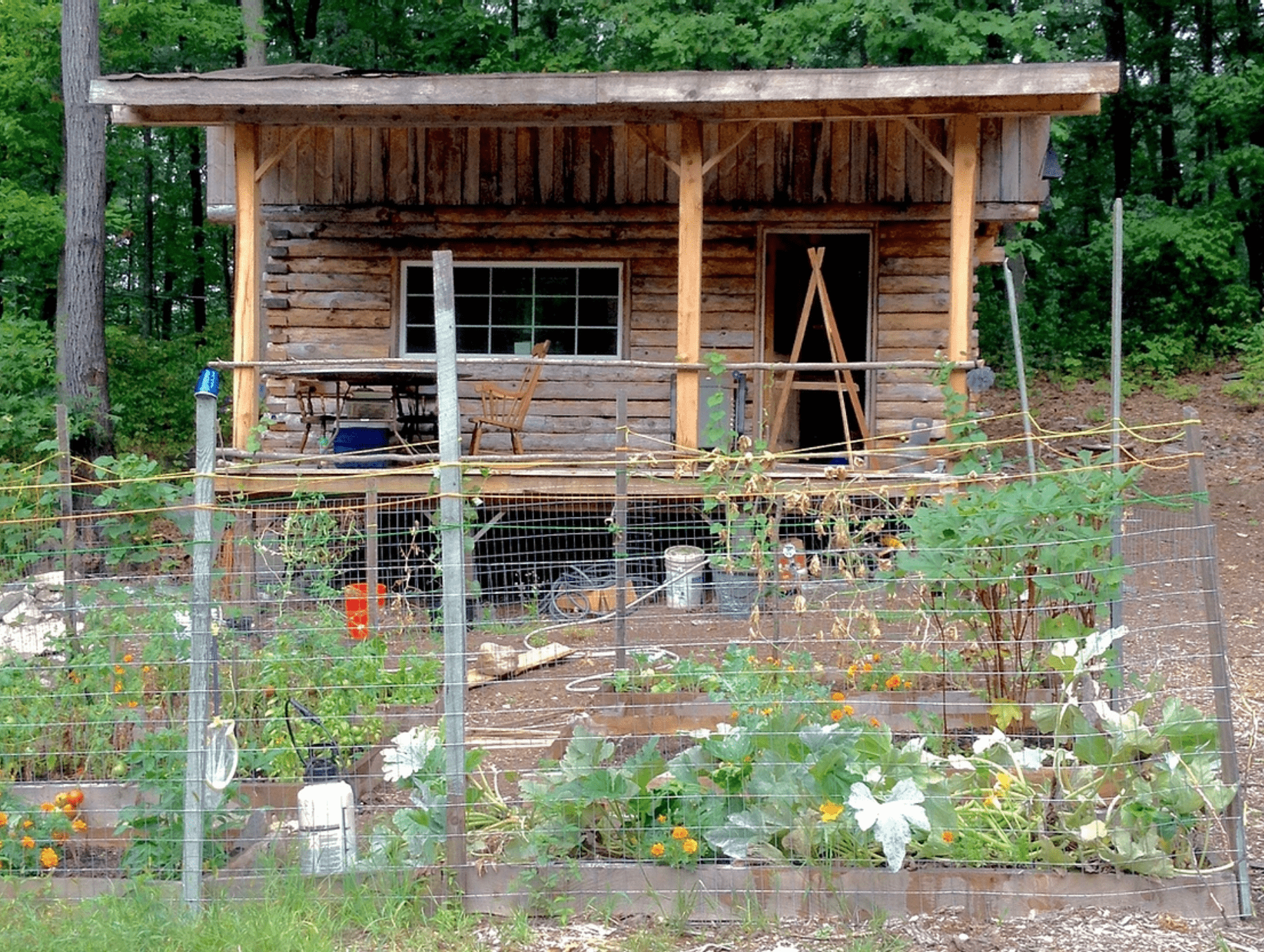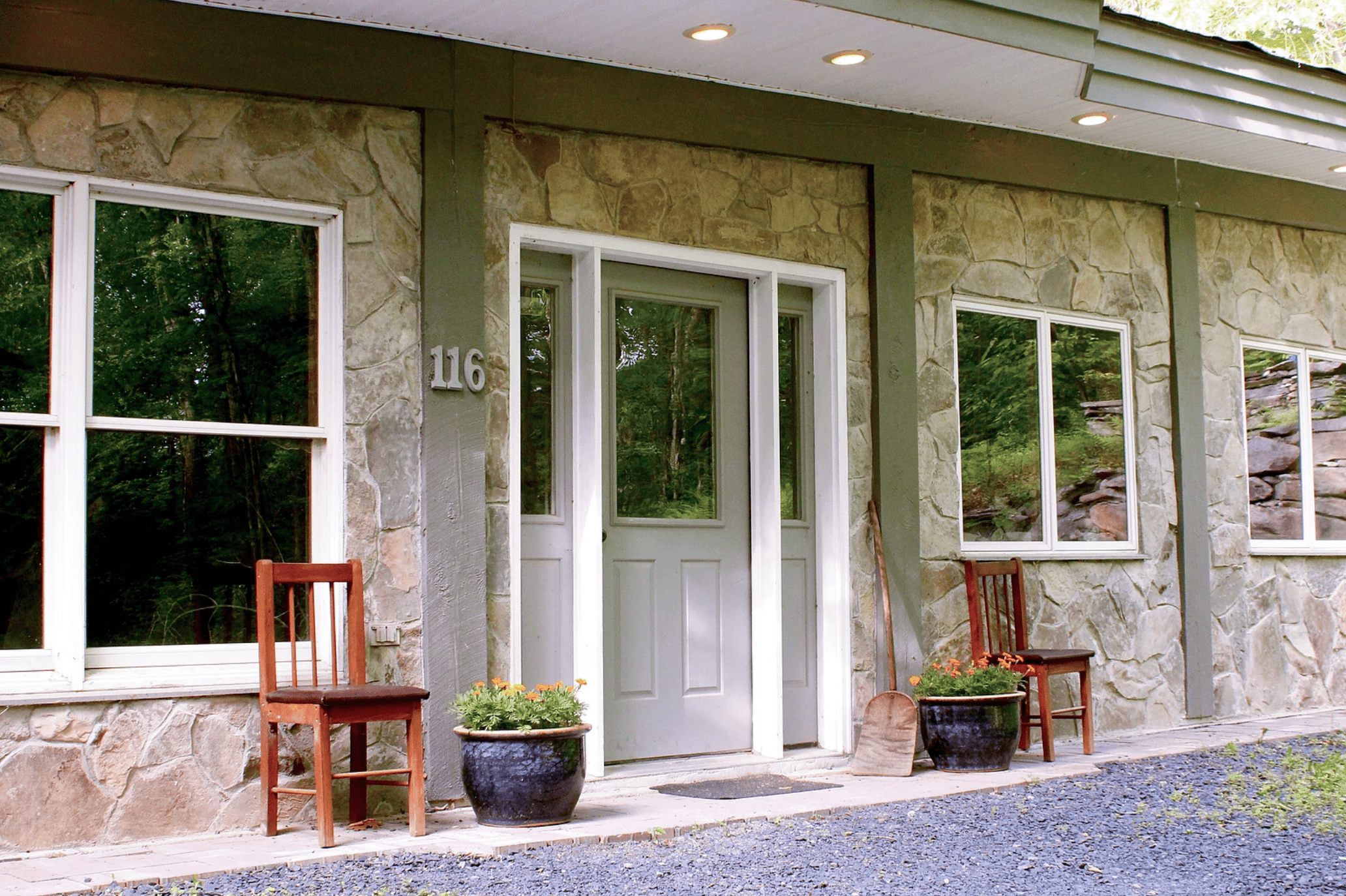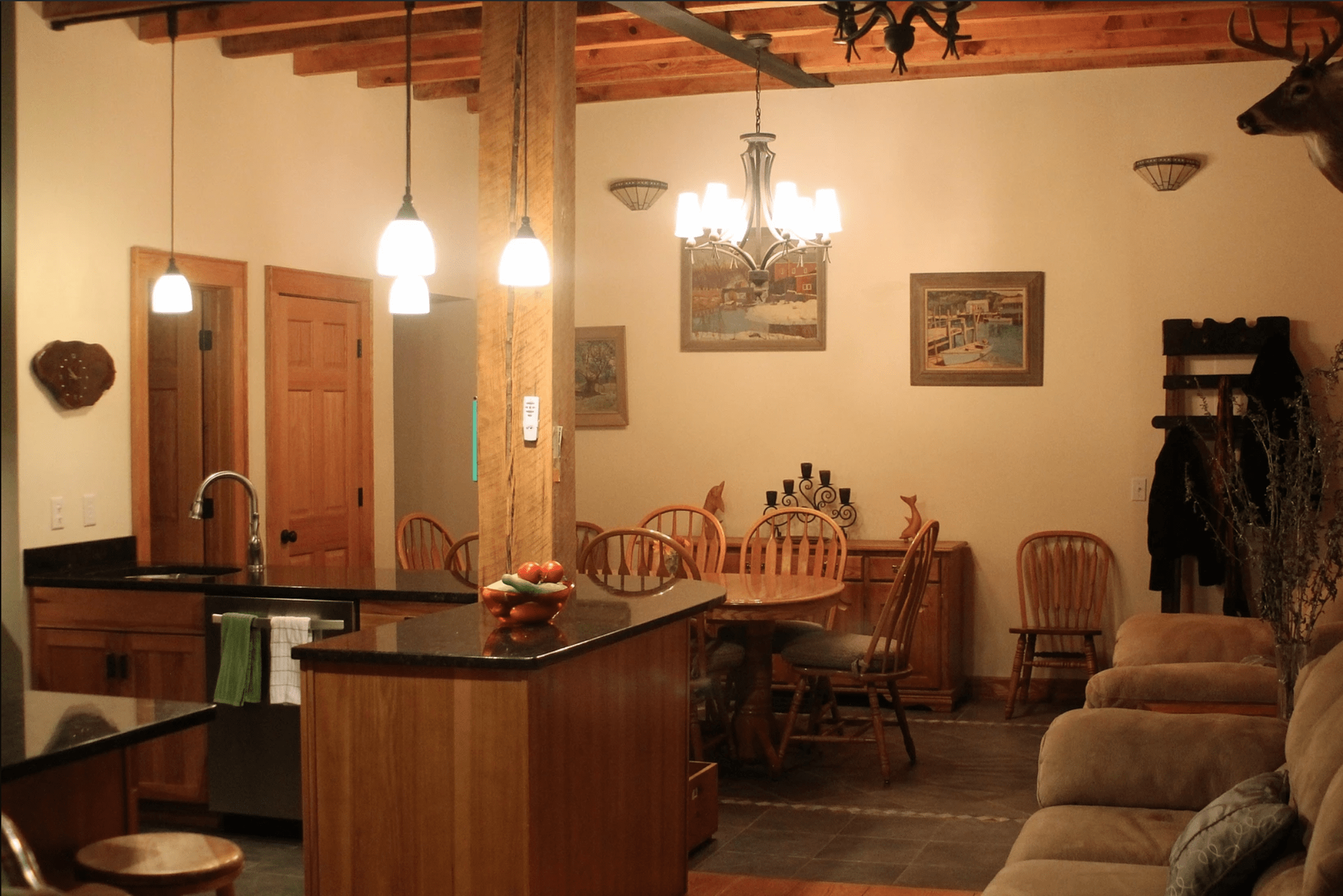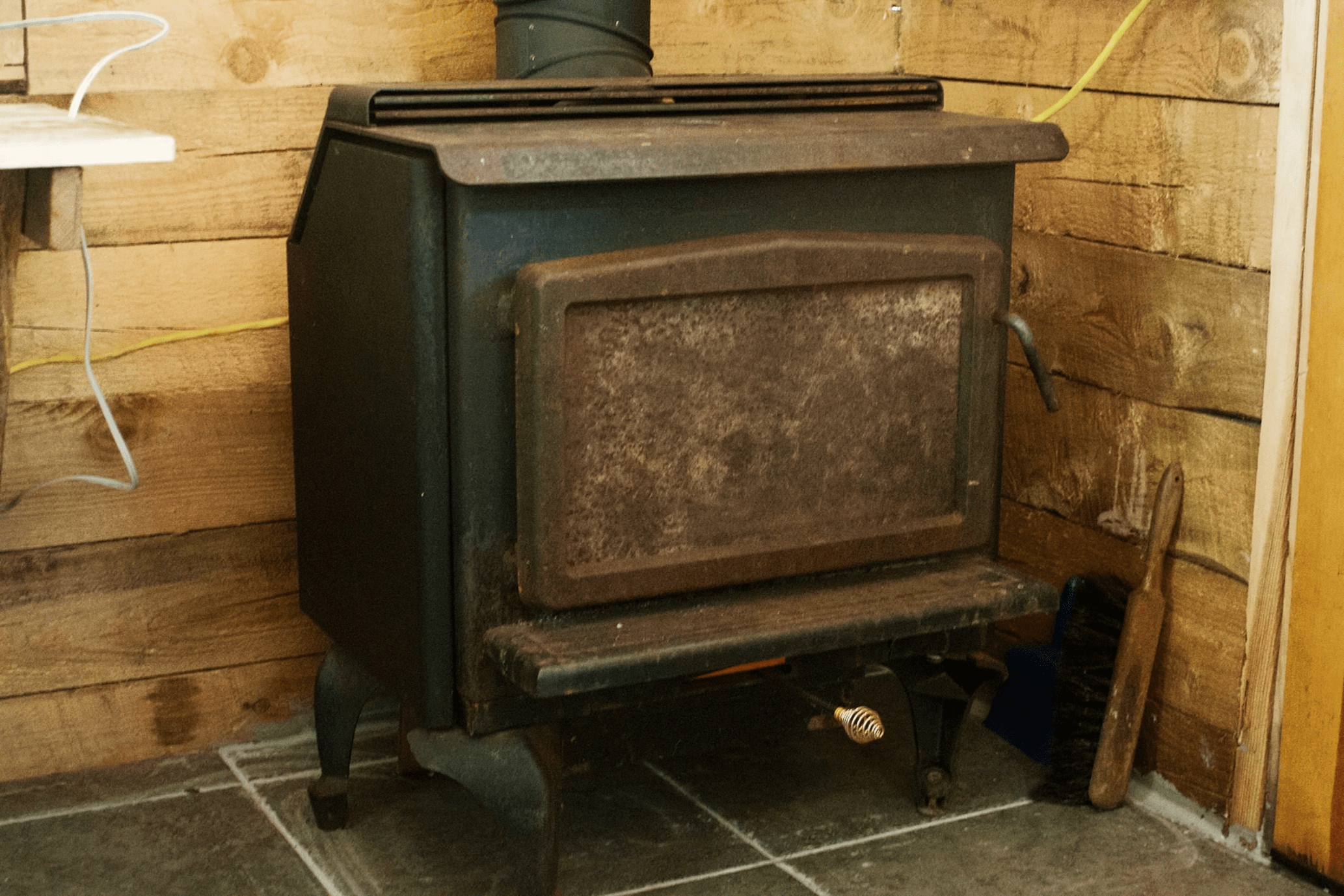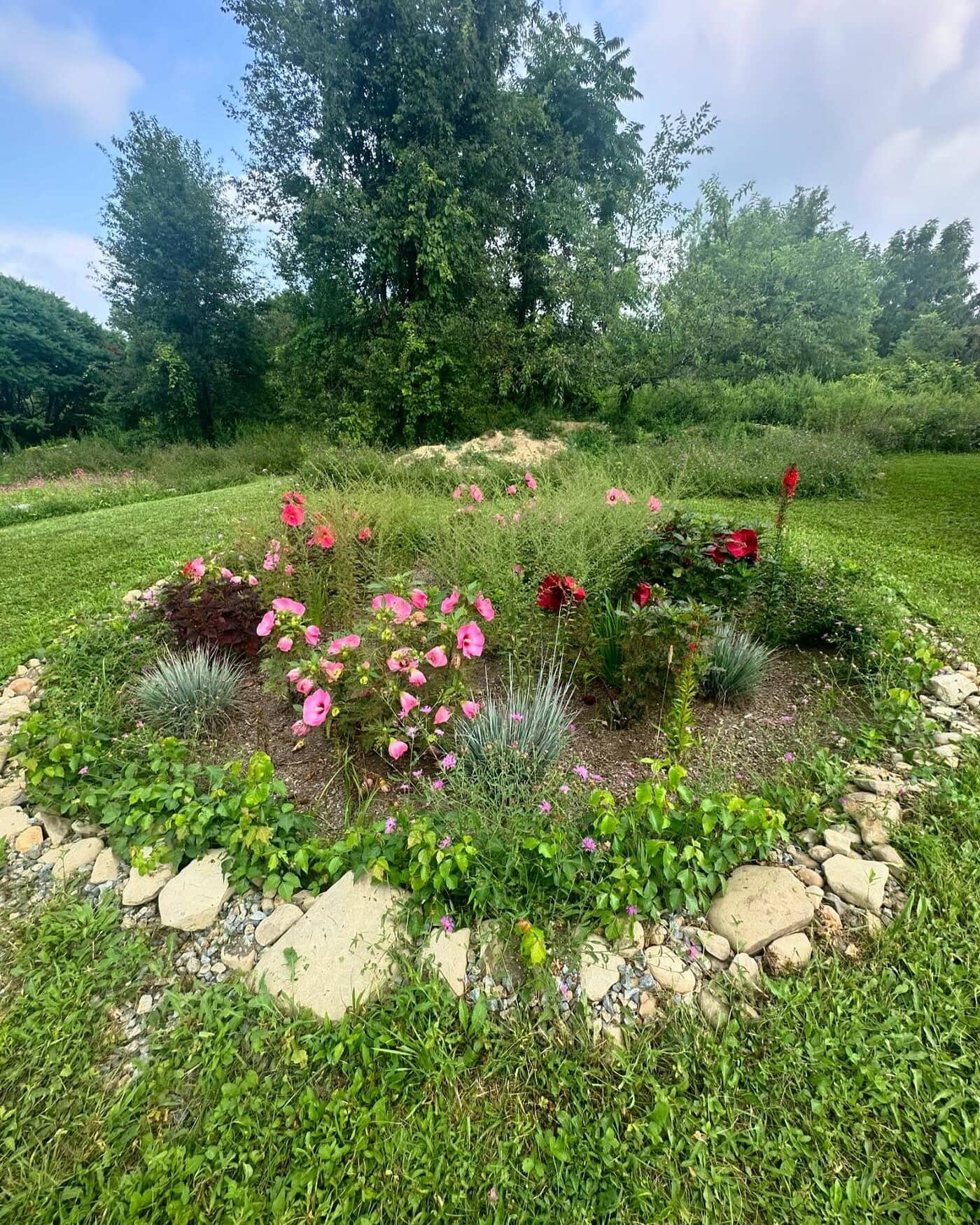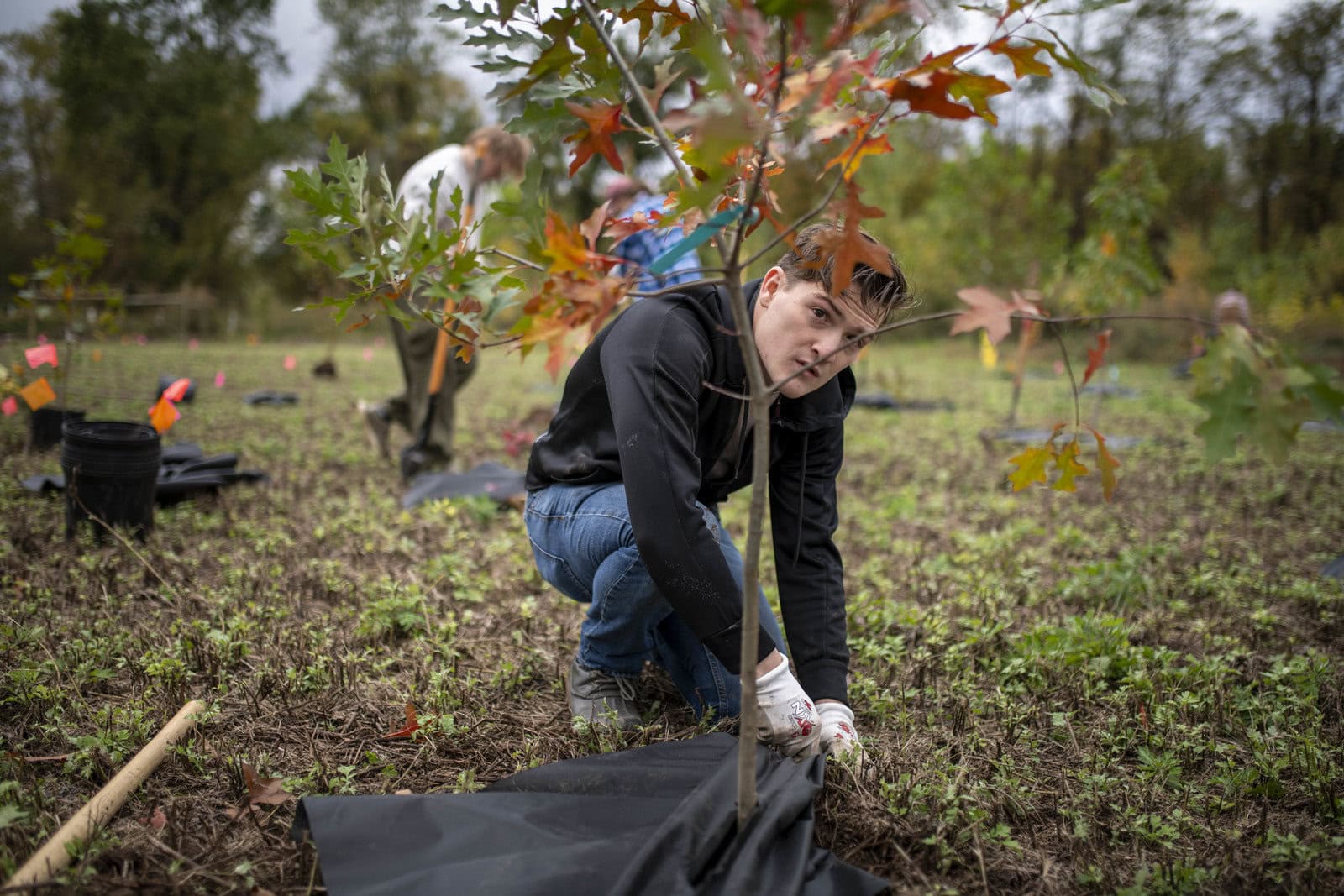Sobering fact: the energy needed to heat, cool and power all U.S. homes accounts for 20% of national emissions. While we keep nominally improving our boxy domiciles, some have abandoned the modern home model in favor of living within the Earth itself. The idea first got attention during the environmental movement of the 1970s and ’80s, especially taking hold in the Southwest. Yet earth-sheltered homes have been around for centuries, and all over; early human settlements and Indigenous groups used the land’s dips and divots to protect against the elements.
Today a small but dedicated group of homeowners have brought these ancient structures into the 21st century. Whether they’re built in-hill or partially engulfed in dirt afterward, the owners enjoy unique views and comfortable temperatures thanks to the earth’s thermal mass cooling the space in summer and warming it in winter. Here are three impressive examples tucked in the Hudson Valley.
High Design: Architect Allan Shope’s Vision
Hudson-based architect Allan Shope had a design problem: how could he build a carbon-neutral home near the Hudson River in Dutchess County that’d be practically invisible to anyone looking at it from Olana? What put the veteran architect on his toes was an agreement, made in partnership with Scenic Hudson, to protect the viewshed from the home of renowned Hudson River School painter Frederic Edwin Church.
Shope had built traditional solar-powered homes before, but to construct his empty-nester house on the river he’d have to work around the hill it stood on. The solution was simple: instead of having a home jutting out from the landscape, he’d dig a hole and insert it into the landscape as an earth-bermed home.
The architect looked to wildlife for inspiration; just as groundhogs, foxes, raccoons and other animals hibernate in burrows, his earth-bermed home (completed in 2015 after two years of construction) would be buried on the side of a hill southwest of the river. Almost two-thirds of the triangular interior is bermed, with a glass facade facing water views.
In keeping with a theme centered on three “local vernacular” materials, Shope used black cherry, granite and copper. All the floors, cabinets and doors are made from the wood of 80 black cherry trees that grew on the property. The granite monoliths outside were hauled over from Columbia County, while the copper in the bathroom was recycled from old roof barns in New Paltz. Perched on top of the grassy “roof” is a 27-kilowatt-hour solar panel array that powers the home and nearby barn.
The now five-year-old home was built to LEED energy standards and features improved heating and cooling systems like brine loops, keeping the interior at 55 degrees year-round. And even though the latest in energy-efficient materials might cost more during construction, Shope argues that the savings residents reap during the buildings’ lifespan actually makes them cheaper in the long run.
And Shope is proud that he met the project’s key design challenge. “When you look at the house from the direction of Olana, all you see is the grass roof,” he says. “That’s all there is.”
Literary Hideaway: Pawling’s Hobbit House
Tucked in the woods of Pawling is a home that looks as if it were plucked from J.R.R. Tolkien’s Lord of the Rings. You might be expecting Frodo or Bilbo Baggins to open up, but it’s Jim Costigan who takes you on a tour of his Hobbit House, his own rendition of the Shire right in Dutchess County.
The Costigans recently opened the space up to guests on Airbnb looking to book a night or two in Middle Earth — with this Earth’s amenities, including two bedrooms, two baths, kitchen, living and dining room.
But it’s more than a novelty rental. Jim Costigan and his wife lived in the 1,500-square-foot space for six months, following a two-month stay by their son Jude (who worked at Scenic Hudson as a parks maintenance associate). “Sometimes when I say that we built a hobbit house, people will say, “For like, little people?” Which always cracks me up,” Jude Costigan says. Ceiling heights actually range from seven to 11 feet.
Despite the magical exterior of the front steps and adjacent patio, the creation of the Hobbit House was grounded mostly in real-world physics. The eight-year building project begun in 2012 was a far cry from the NYC high rises Costigan was used to in his construction career working with reinforced concrete. The scale might’ve been smaller, but the 32-foot arch design of the building itself required just as much engineering.
Besides providing a shell for the interior, it had to withstand the combined weight of reinforced concrete, mounds of soil and the inches of snow that fall in the area each winter. With oversight from a structural engineer, Costigan was able to get the arch and two footings to withstand loads of up to 250 pounds per square foot. All the work he put into it made it his own; necessities like an additional bridge to get over the nearby stream set it apart from the dwellings he saw in the 2001 film The Fellowship of the Ring.
A constant link to the grid powers every appliance. But although it doesn’t generate its own power, the home’s well-insulated interior, earth berm on 4 of the 6 sides and Passive House-certified components minimize heating and cooling costs. Costigan estimates electricity, heating and cooling combined to range from $85-125 per month.
All the care and construction that went into every aspect of the house is hard to ignore. It’s there the minute you enter through the colorful, fantastical 8-foot entrance. “It’s a mind-blowing experience,” Jim Costigan says, “because it’s really something that you’ve never really seen before.”
A Practical Build in the Woods: Terra Casa
John Grzibowski likes to be resourceful. He’s been fascinated with earth-sheltered homes ever since he began reading up on the work of advocates like Malcolm Wells and Rob Roy decades ago. Unobtrusive housing sounded to him like the go-to solution to the environmental turmoil caused by human expansion that has already taken over almost three-fourths of the world’s available landmass.
“There’s that resistance about someone doing something right that you feel like you’re doing something wrong,” Grzibowski says. “It’s hard for a lot of people to acknowledge.”
In 1996, when he started his 6-year project to build his own earth-sheltered home on a 4.7-acre plot of land he bought next to his Newburgh home, Grzibowski used what was on hand. Owning a local tree service, he got wood from spots he worked on. All the beams, rafters and joists were cut from wood he already had or milled from storm-felled trees. The flooring came from a dead giant oak tree in Cornwall. Even the brickwork on the exterior was sourced from a dilapidated home in Dutchess County. “If I was a concrete contractor and I lived where there were no trees around, guess what? I’d have a concrete house with solar panels and probably a little windmill above it,” he says.
His Terra Casa now sits partially exposed to the outside world. He wanted it to function like an on-grid one-floor ranch house with the added benefit of being lockdown-ready. If he goes away for the winter, he can shut off the water and electricity without worrying; the inside temperature hovers between the mid-30s to high 40s. In summer, it could be breaking into the triple digits outdoors but be in the 70s inside.
Grzibowski remembers when the a housing development near his home led to the clearing of dozens of trees on that hill. He takes satisfaction in knowing that Terra Casa is a part of nature. It’s the little touches, like the changing swaths of grass that cover the roof or the sound of deer eating atop it, that make it all worthwhile.
“They like to pound their hooves in the roof. It’s like how you see horses paw at the ground,” he says. “I didn’t know when they’re digging up moss and stuff in the winter [that] they did it.”


